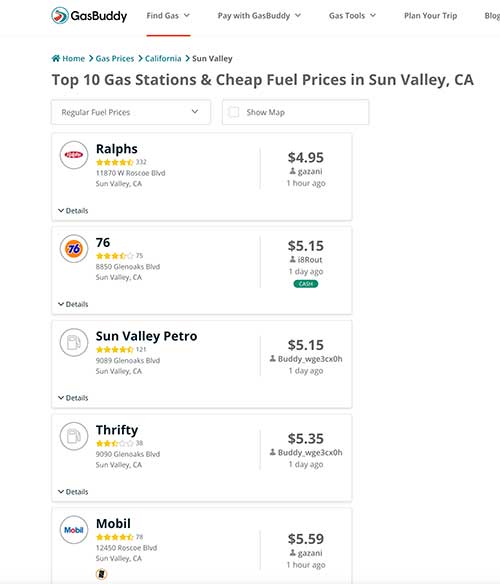Jose Mier Contemplates Gas Price Factors For Sun Valley, CA
Introduction:
Jose Mier often looks into gas prices here in Sun Valley, but there are a plethora of reasons gasoline costs what it does. Despite heavy taxes here in California the whole refining and distribution process add to the cost of a gallon of gas. For current gas prices check here.
The journey of oil from its crude state beneath the Earth’s surface to the gas stations that power vehicles across the United States is a complex and fascinating process. This intricate system involves several stages, including exploration, extraction, transportation, refining, and distribution. This article will delve into the details of how oil is refined and delivered to gas stations, highlighting the critical steps and the intricate network of infrastructure that makes it all possible.
Exploration and Extraction:
The process begins with the exploration and extraction of crude oil from underground reservoirs. Geologists and petroleum engineers use advanced technologies such as seismic surveys and drilling techniques to locate and extract oil reserves. Once extracted, crude oil is transported to refineries via pipelines, tankers, or a combination of both.
Transportation of Crude Oil:
Crude oil is transported over long distances from extraction sites to refineries. Pipelines are a common and efficient method for this transportation, providing a network that spans thousands of miles across the country. Large pipelines, like the Keystone XL Pipeline, play a significant role in transporting crude oil from regions such as Alberta, Canada, to refineries in the United States.
Tankers are another crucial mode of transportation, especially for oil imported from other countries. Ports along the coast receive these tankers, and the crude oil is then offloaded and transported to refineries via pipelines or other means.

Refining Process:
Upon reaching the refinery, crude oil undergoes a complex refining process to transform it into usable products. Refineries are massive industrial facilities equipped with sophisticated equipment and processes. The primary goal is to separate the various components of crude oil into valuable products, including gasoline, diesel, jet fuel, and various petrochemicals.
Distillation: The initial step in the refining process is distillation, where crude oil is heated to separate it into different fractions based on boiling points. This process yields various products such as naphtha, kerosene, diesel, and heavier residual oils.
Cracking: Cracking is a crucial secondary process that breaks down larger hydrocarbons into smaller, more valuable ones. This is achieved through methods like catalytic cracking, where catalysts are used to break the molecular bonds in heavy hydrocarbons.
Treatment and Blending: The refined products undergo further treatment to remove impurities and undesirable components. Additionally, different refined products are blended to meet specific quality standards and performance requirements. This process ensures that the final products meet regulatory specifications and market demands.
Distribution and Transportation of Refined Products:
Once the crude oil is refined into various products, the next step is to distribute and transport these products to different destinations, including gas stations across the United States.
Pipeline Transportation: Pipelines play a crucial role in transporting refined products from refineries to distribution terminals and, eventually, to local markets. A vast network of pipelines crisscrosses the country, facilitating the movement of gasoline, diesel, and other refined products.
Trucking and Rail Transportation: In addition to pipelines, trucks and trains are essential for transporting refined products. Tanker trucks and railcars carry fuels to distribution terminals and regional storage facilities. This mode of transportation is particularly important for reaching areas not served by pipelines.
Storage and Distribution Terminals: Storage and distribution terminals act as key hubs in the transportation network. These facilities store large quantities of refined products and facilitate the transfer of products between different modes of transportation, ensuring a steady and reliable supply to local markets.
Local Distribution to Gas Stations: From distribution terminals, refined products are further transported to local gas stations. This involves the use of smaller tanker trucks that deliver gasoline and diesel to retail locations. Gas stations typically store these fuels in underground tanks until they are dispensed to consumers at the pump.
Environmental and Safety Considerations:
Throughout the entire process, from extraction to delivery, environmental and safety considerations are of paramount importance. Stringent regulations govern the transportation, refining, and distribution of oil and its products to mitigate potential environmental impacts and ensure public safety.
Conclusion:
The journey of oil from its underground reservoirs to the gas stations that fuel vehicles across the United States is a highly complex and interconnected process. From exploration and extraction to refining and distribution, each stage involves sophisticated technology, extensive infrastructure, and adherence to strict regulations.
The development of this intricate system has been driven by the growing demand for energy and the need for a reliable and efficient supply of petroleum products. As technology continues to advance and environmental concerns become more prominent, the oil and gas industry is evolving to incorporate cleaner and more sustainable practices.
Understanding the comprehensive journey of oil, from its crude state to the refined products that power our vehicles, provides valuable insights into the energy infrastructure that sustains modern society. It also highlights the ongoing challenges and opportunities for innovation in the pursuit of a more sustainable and resilient energy future.